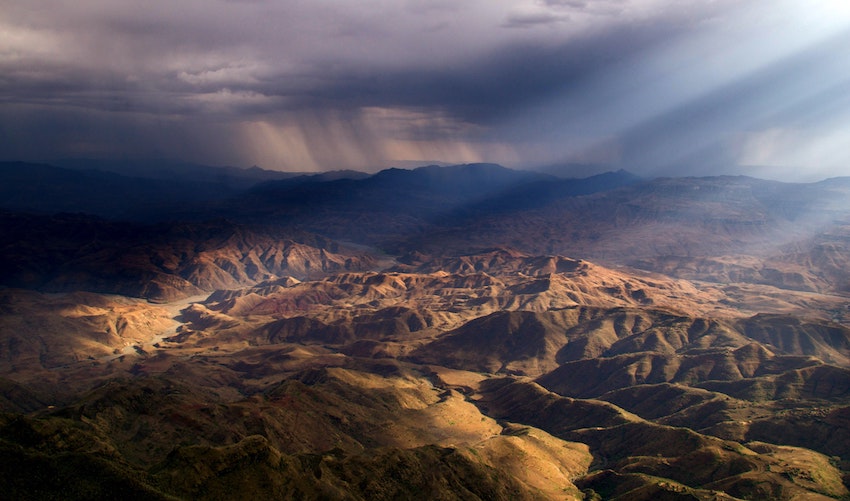By now you’re well on your way to being a coffee flavor expert. We’ve talked about how flavors differ from coffee varietals or how the roasting process changes the beans—just a few of the factors that create a unique profile! But have you ever noticed the elevation listed on your bag of beans? On this episode of Coffee On The Brain, Amber reveals how altitude affects coffee flavor. The answer might surprise you!
A coffees flavor can change based on where the plant is grown. The higher altitude affects coffee flavor by making it harder for the coffee plant to mature. You might think this means that the coffee’s flavor wouldn’t be good, but actually, the opposite is true. It takes longer for the coffee plants to mature and that helps produce cherries that are bursting with fruity, floral or spicy flavors.
When we say higher altitude, we're talking about coffee that is grown at least above 3,000 feet or preferably 5,000 feet or 1,524 meters, which coffee roasters frequently use as their measurement. Some of our favorite coffees are grown above 5,000 feet.
The lower you go in elevation—lets say down to below 3,000 feet—the easier it is for the plant to grow, mature and produce boring flavors. That’s right, boring. Lower altitude cherries create a less desirable cup described as simple and bland.
Here’s a quick and simple guide for how altitude affects coffee flavor:
Growing at higher altitudes does have its drawbacks, though. It puts stress on the plant and makes it harder for farmers to grow a lot. With fewer plants, it is more expensive to produce those coffees and that means a higher price tag for us.
Here’s another factor to throw in the mix—slopes. Imagine you’re a farmer growing your coffee in a valley that floods. There’s no drainage so the plants begin to absorb lots of water and produce big, fat, juicy cherries. Sounds delicious, right? Wrong—those bloated cherries have lost lots of flavor thanks to the water diluting the sugars.
The farmer’s that planted their coffee on a mountain slope have better drainage and so the cherries are crisp. The harder cherries preserve the delicious sugars and flavor packed in the beans—think Intelligentsia Coffee Bolivia Anjilanaka that Gail brewed on this episode of Good Morning Gail. This seasonal blend is grown above 5000 feet and has notes of chocolate, nuts and fruit.
The higher altitude affects coffee flavor by making it harder for the coffee plant to mature.
Flavor profiles are complex with all the variables in the mix that produce different notes and body. It’s no wonder there are so many rich coffee blends to try! Watch the full episode of Coffee On The Brain with Amber and if you didn’t realize you were missing out on episodes, come on over and subscribe to our YouTube channel.
